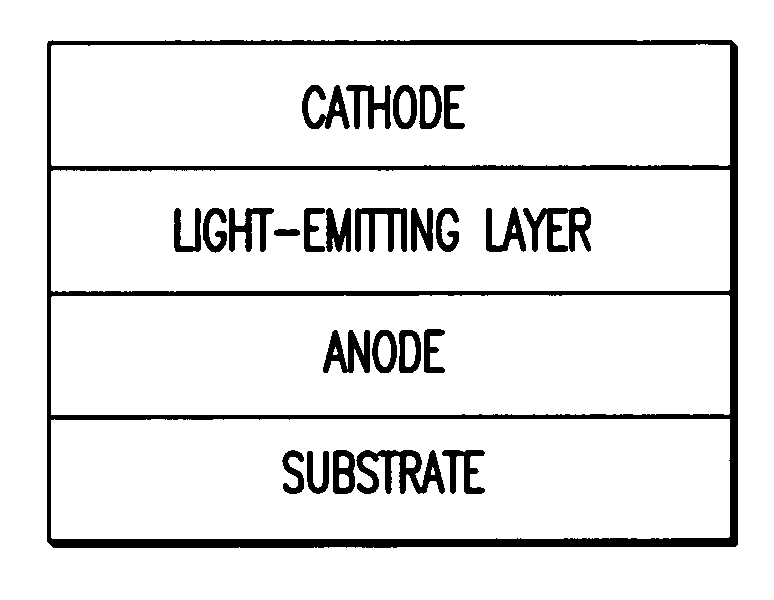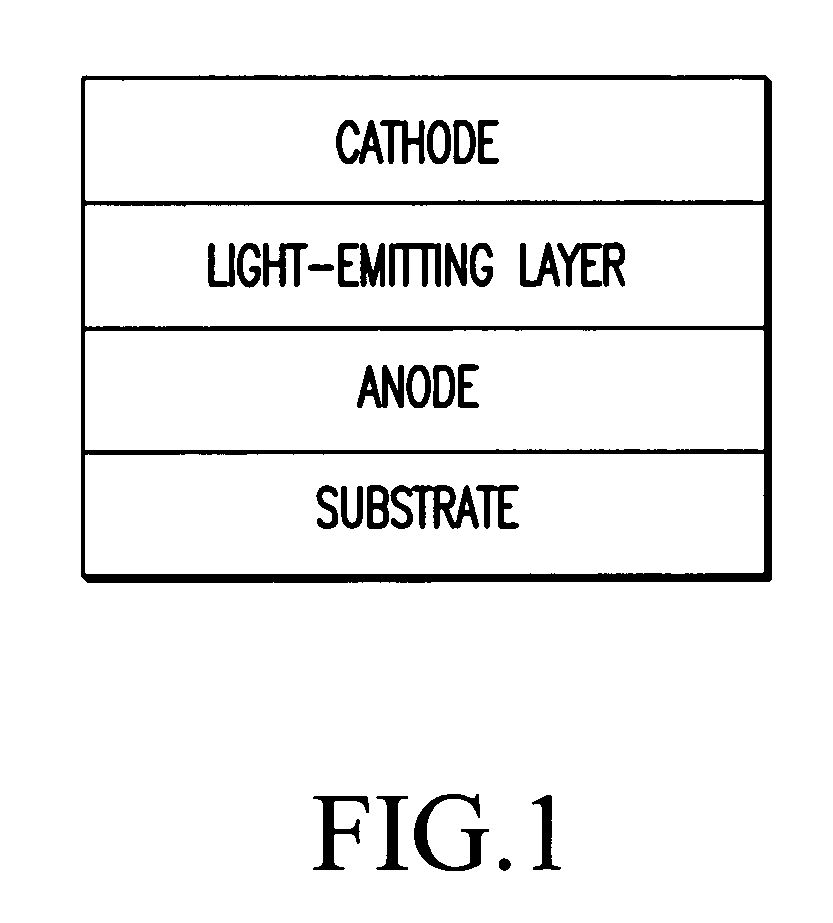Light-emitting device having specific linear thermal expansion coefficient and gas barrier properties
a technology of thermal expansion coefficient and light-emitting device, which is applied in the direction of organic semiconductor device, discharge tube luminescnet screen, natural mineral layered product, etc., can solve the problems of poor luminance and light-emitting efficiency, high driving voltage of light emission, and use of flexible plastic substrates, so as to achieve excellent durability, light-emitting efficiency and luminance.
- Summary
- Abstract
- Description
- Claims
- Application Information
AI Technical Summary
Benefits of technology
Problems solved by technology
Method used
Image
Examples
example 1
[0075]A 50-μm-thick polyimide film (UPILEX-50S, available from Ube Industries, Ltd.) was laminated onto both surfaces of a 5-cm-each aluminum foil (thickness: 30 μm) by an adhesive, to produce a support substrate. TMA measurement indicated that the support substrate had a linear thermal expansion coefficient of 10 ppm / ° C. The support substrate also had water permeability of 0.01 g / m2·day or less (MOCON method, 25° C., 90% RH), and oxygen permeability of 0.01 cc / m2·day·atm or less (MOCON method, 25° C., 0% RH).
[0076]A 250-nm-thick ITO layer with an indium / tin molar ratio of 95 / 5 was formed on this support substrate by a DC magnetron sputtering method to produce an anode. The anode had resistance of 7 Ω / square.
[0077]N,N′-dinaphthyl-N,N′-diphenylbenzidine was vapor-deposited on this anode in vacuum at a speed of 1 nm / second, to produce a 0.04-μm-thick, hole-transporting layer. Tris(2-phenylpyridine)iridium complex as an ortho-metallated complex, and 4,4′-N,N′-dicarbazole-biphenyl as a...
example 2
[0083]A light-emitting device was produced and evaluated in the same manner as in Example 1 except for using a copper foil (thickness: 50 μm) in place of the aluminum foil. The results are shown in Table 1. The TMA measurement indicated that the support substrate had a linear thermal expansion coefficient of 8 ppm / ° C. The support substrate also had water permeability of 0.01 g / m2·day or less (MOCON method, under the same conditions as in Example 1), and oxygen permeability of 0.01 cc / m2·day·atm or less (MOCON method, under the same conditions as in Example 1).
example 3
[0084]A light-emitting device was produced and evaluated in the same manner as in Example 1 except for using as an insulating layer a sputtered silicon oxide film (thickness: 30 nm) in place of the polyimide sheet. The results are shown in Table 1. The TMA measurement indicated that the support substrate had a linear thermal expansion coefficient of 5 ppm / ° C. The support substrate also had water permeability of 0.01 g / m2·day or less (MOCON method, under the same conditions as in Example 1), and oxygen permeability of 0.01 cc / m2·day·atm or less (MOCON method, under the same conditions as in Example 1).
PUM
| Property | Measurement | Unit |
|---|---|---|
| thickness | aaaaa | aaaaa |
| thickness | aaaaa | aaaaa |
| thickness | aaaaa | aaaaa |
Abstract
Description
Claims
Application Information
 Login to View More
Login to View More - R&D
- Intellectual Property
- Life Sciences
- Materials
- Tech Scout
- Unparalleled Data Quality
- Higher Quality Content
- 60% Fewer Hallucinations
Browse by: Latest US Patents, China's latest patents, Technical Efficacy Thesaurus, Application Domain, Technology Topic, Popular Technical Reports.
© 2025 PatSnap. All rights reserved.Legal|Privacy policy|Modern Slavery Act Transparency Statement|Sitemap|About US| Contact US: help@patsnap.com


